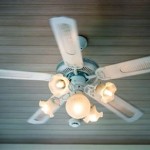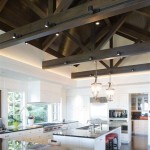How To Make A False Ceiling With Lights
Creating a stunning and functional false ceiling with integrated lighting can dramatically enhance the ambiance and aesthetic appeal of any space. Understanding the essential aspects of this process is crucial for achieving a successful outcome. This article will delve into the core elements, providing a comprehensive guide to help you navigate the complexities of false ceiling construction with lighting.
Planning and Design: Before embarking on construction, meticulous planning and design are essential. Determine the desired ceiling height, lighting requirements, and overall layout. Consider factors such as room size, usage, and existing electrical infrastructure to ensure a well-integrated solution.
Materials Selection: The choice of materials for the false ceiling and lighting fixtures significantly impacts the overall appearance and functionality. Gypsum boards, mineral fiber tiles, and PVC panels are common options for false ceilings, offering varying degrees of durability, fire resistance, and acoustic properties. For lighting, select fixtures that complement the ceiling design, provide adequate illumination, and meet safety standards.
Structural Framework: The structural framework provides the foundation for the false ceiling. Metal channels or wooden battens are typically used to create a grid system that supports the ceiling panels and lighting fixtures. Proper spacing and secure mounting are crucial for ensuring the stability and longevity of the ceiling.
Electrical Wiring and Lighting Installation: Electrical wiring must be carefully planned and executed to ensure safe and functional lighting. Conceal wires within the false ceiling cavity and connect them to appropriate junction boxes. Lighting fixtures should be installed according to manufacturer instructions, paying attention to proper grounding and heat dissipation.
Ceiling Panel Installation: Ceiling panels are typically attached to the structural framework using screws, clips, or adhesive. Ensure panels are securely fastened and align correctly to achieve a seamless and visually appealing finish. Consider using acoustical panels to reduce noise levels in the space.
Lighting Control: Various lighting control options are available, including switches, dimmers, and motion sensors. Choose controls that suit the space's usage patterns and desired ambiance. Proper lighting control allows for customized illumination, enhancing comfort and energy efficiency.
Finishing Touches: Once the false ceiling with lights is installed, finishing touches can complete the look. Paint the ceiling in a desired color or apply decorative moldings to enhance the aesthetics. Consider adding soffits or coves to create visual interest and indirect lighting effects.

Things To Know About A False Ceiling Avisun Properties

3 Best False Ceiling Lights You Can Use To Create Better Ambience

How To Make A False Ceiling Design With Lighting Houzz

Technique To False Ceiling Installation Contractorbhai

Beautiful And Easy To Install Profile Light Ceiling Designs

How To Build A Dropped Ceiling Box

3 Best False Ceiling Lights You Can Use To Create Better Ambience

How To Make A False Ceiling Design With Lighting Houzz

How To Make A False Ceiling Design With Lighting Houzz

Diy A Dropped Ceiling With Lighting
Related Posts








